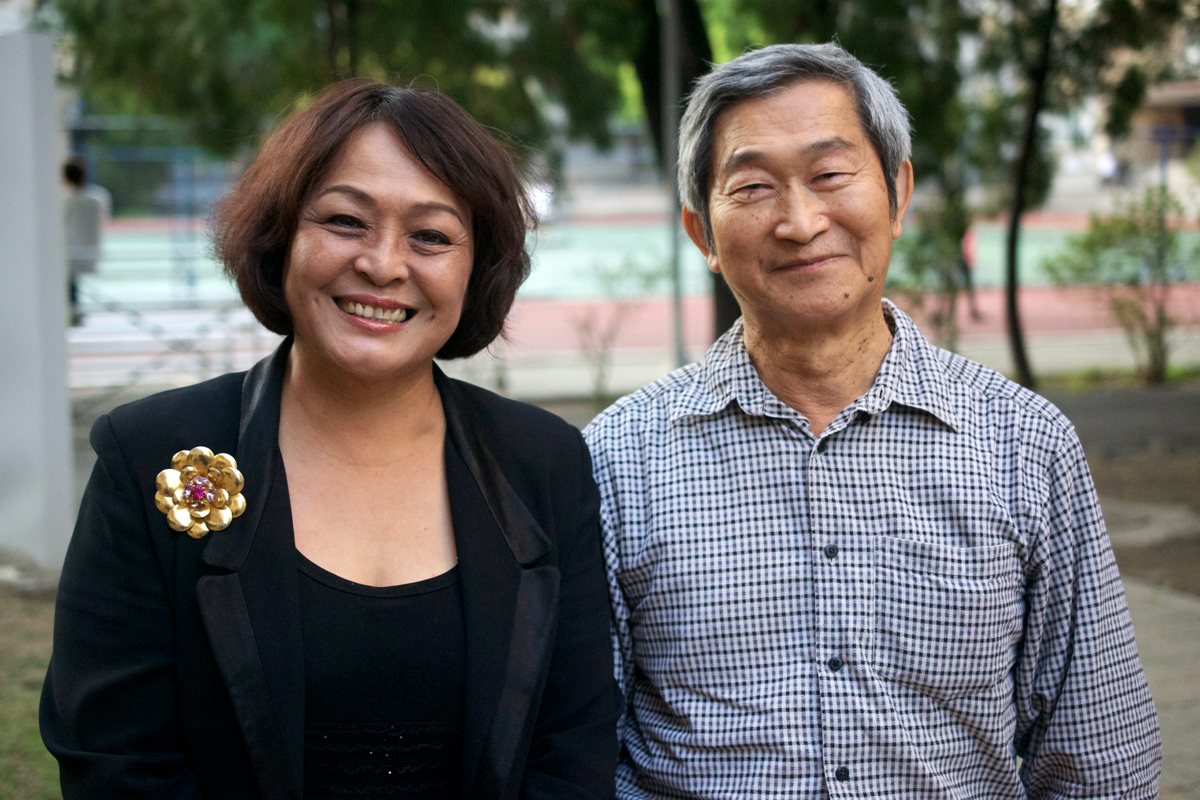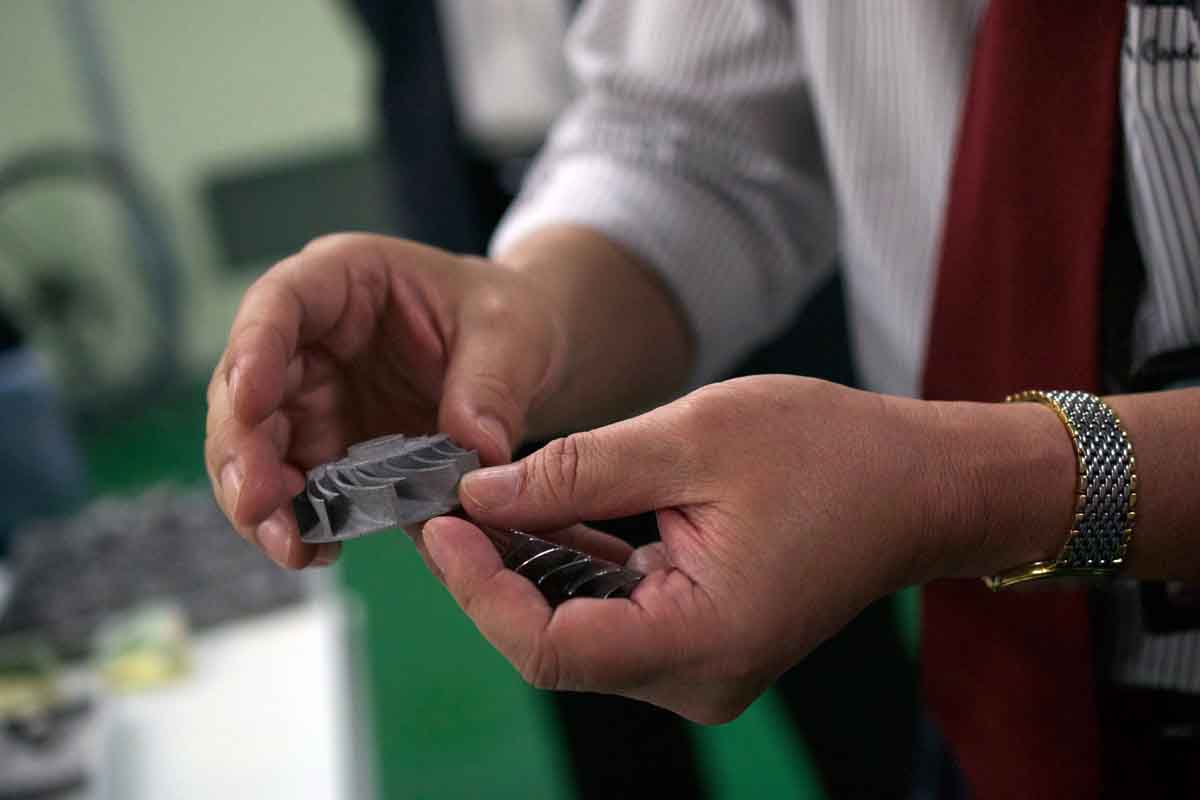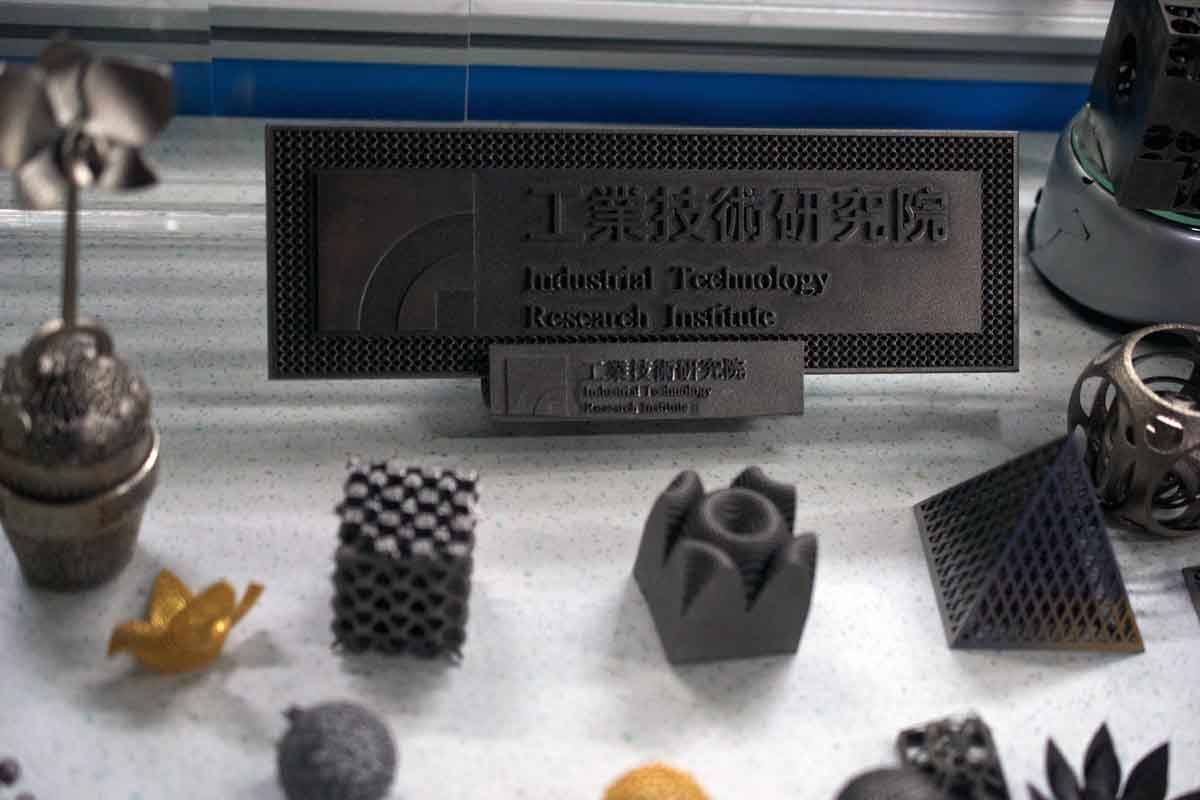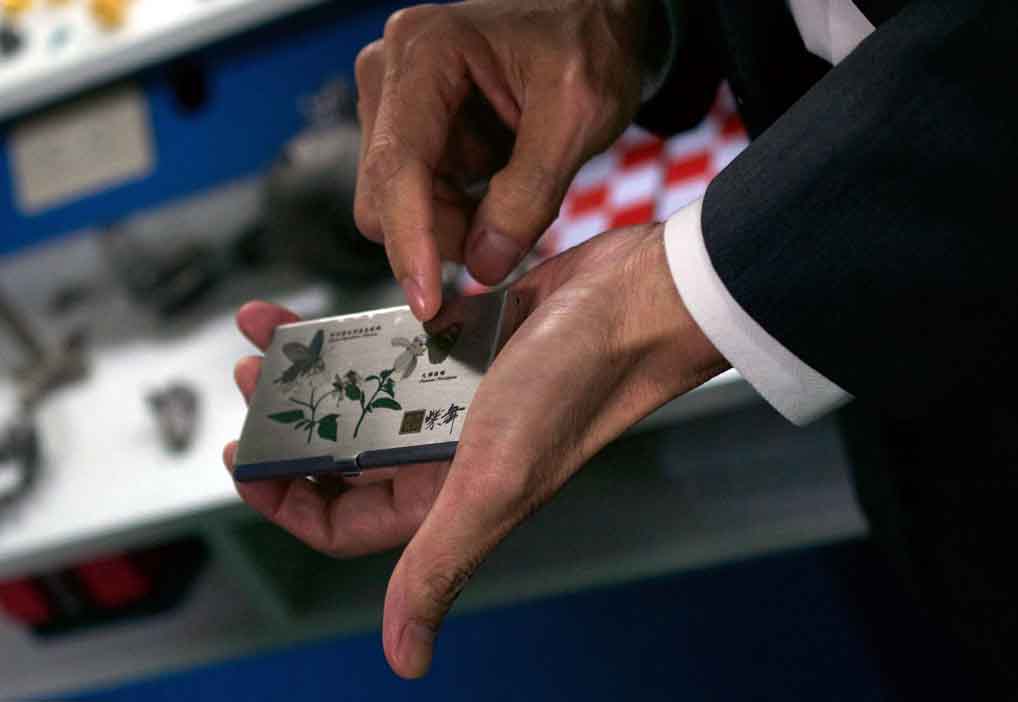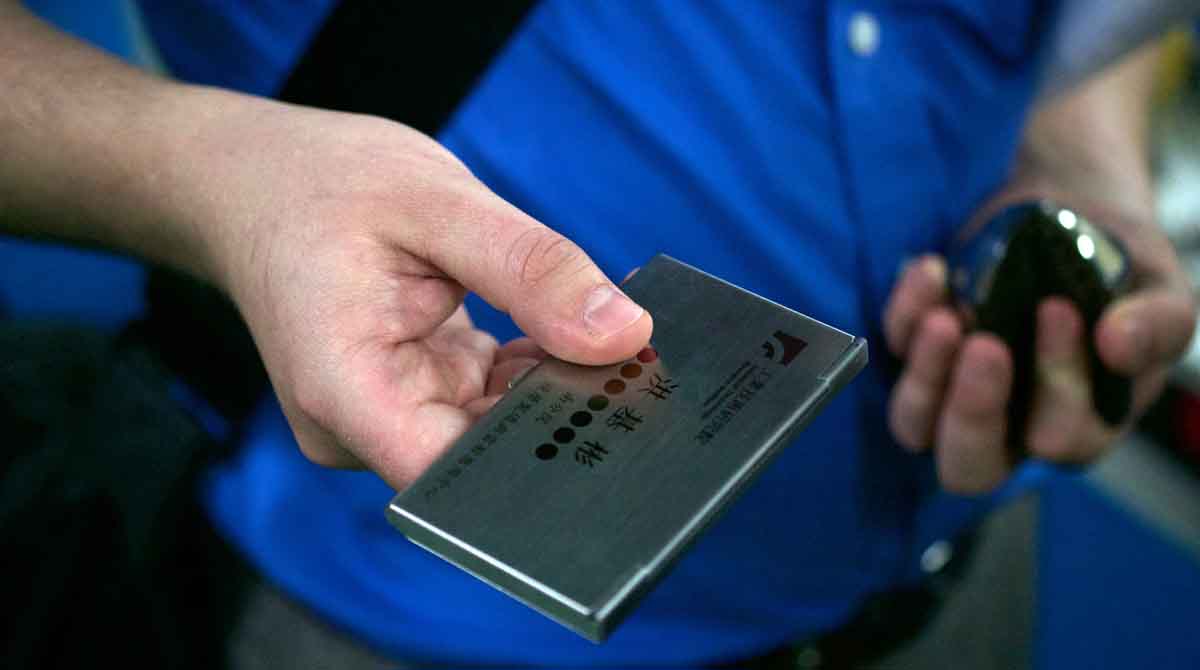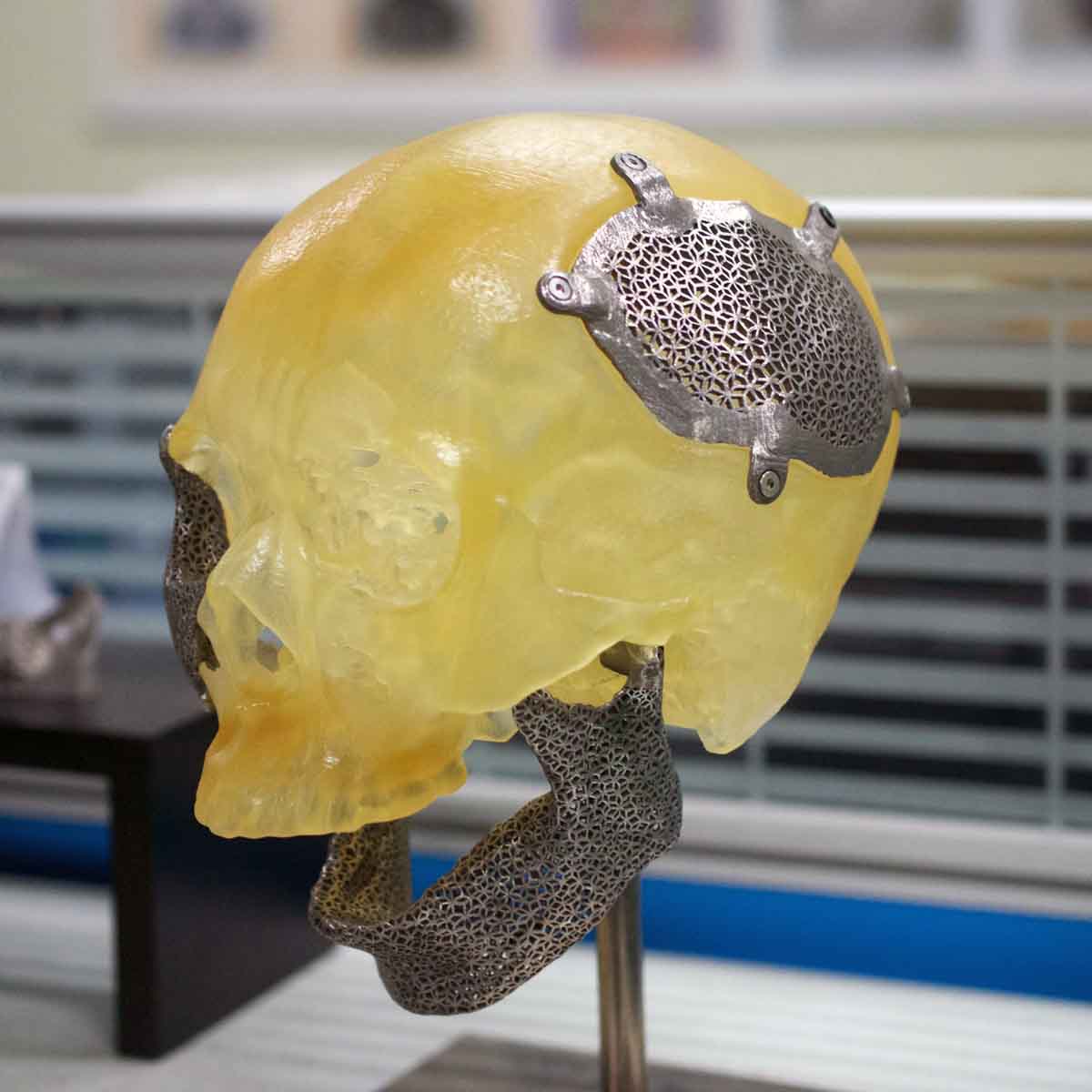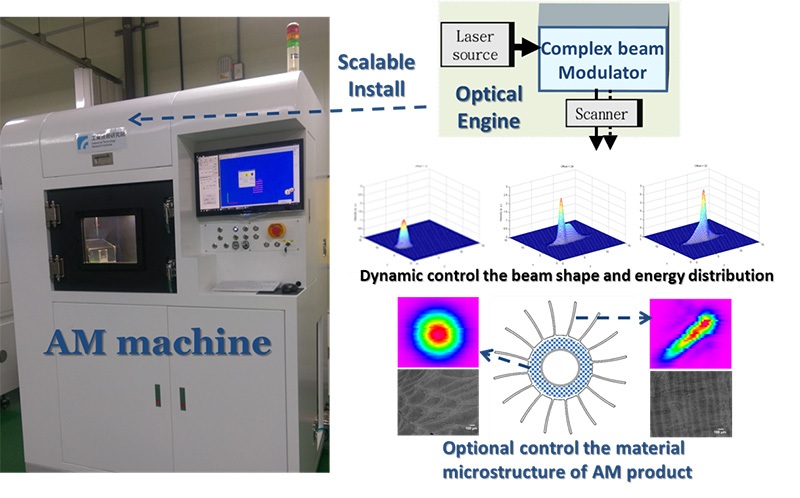This is part six in a six-part series covering 3D printing developments in Taiwan. For the other parts in the series, find parts one, two, three, four, and five here.
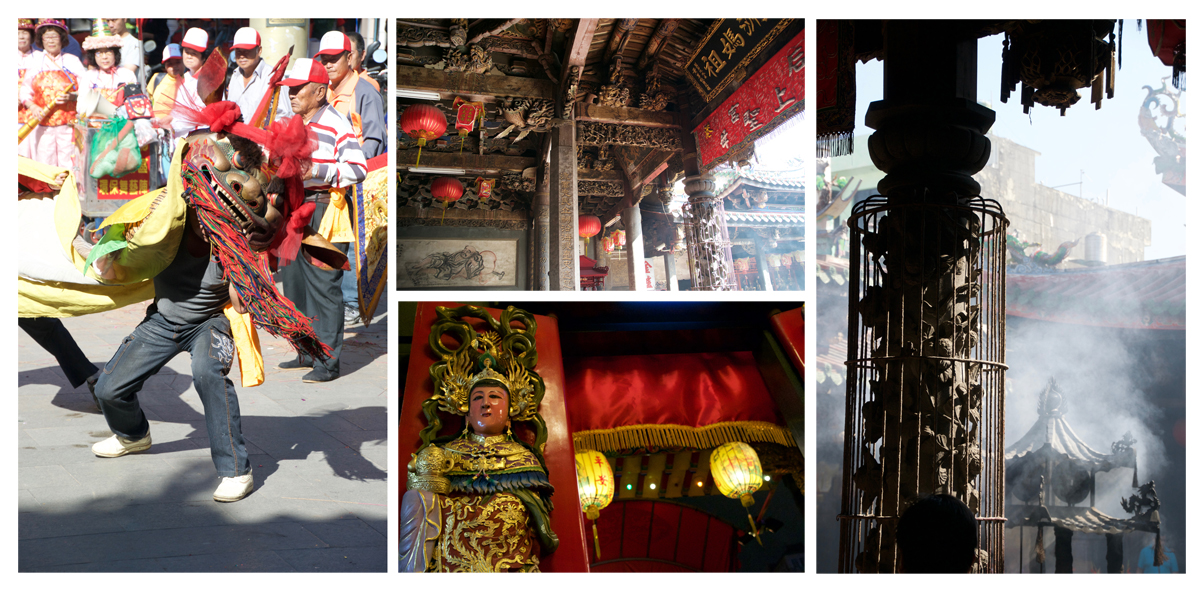
After Taipei, Danielle and I had the amazing opportunity to meet up with my mom’s English student, from when she lived in Taiwan in 1968. Li Nan Hui and his wife, Lvyue Ling, picked us up from the High Speed Rail station in Taichung and immediately took us to Lukang, one of the oldest cities on the island, and not far from the coast, making for a bright, tropical climate that contrasted starkly with the rainy days of the capital.
In Lukang, we happened upon a celebration for the Taoist god Mazu at the Lukang Mazu Temple, where we were treated to drums, incense, fireworks, and a dancing dragon, before ambling down the alleyways of a weekend fair, eating taro and subtly sweet pastries. They then took us to the Lukang Folk Arts Museum, a turn-of-the-century home filled with hand-crafted wooden furniture and clothes from the late 1800s and early 1900s. Next, we took afternoon tea, before seeing what was once the business school where my mom taught English for one year.
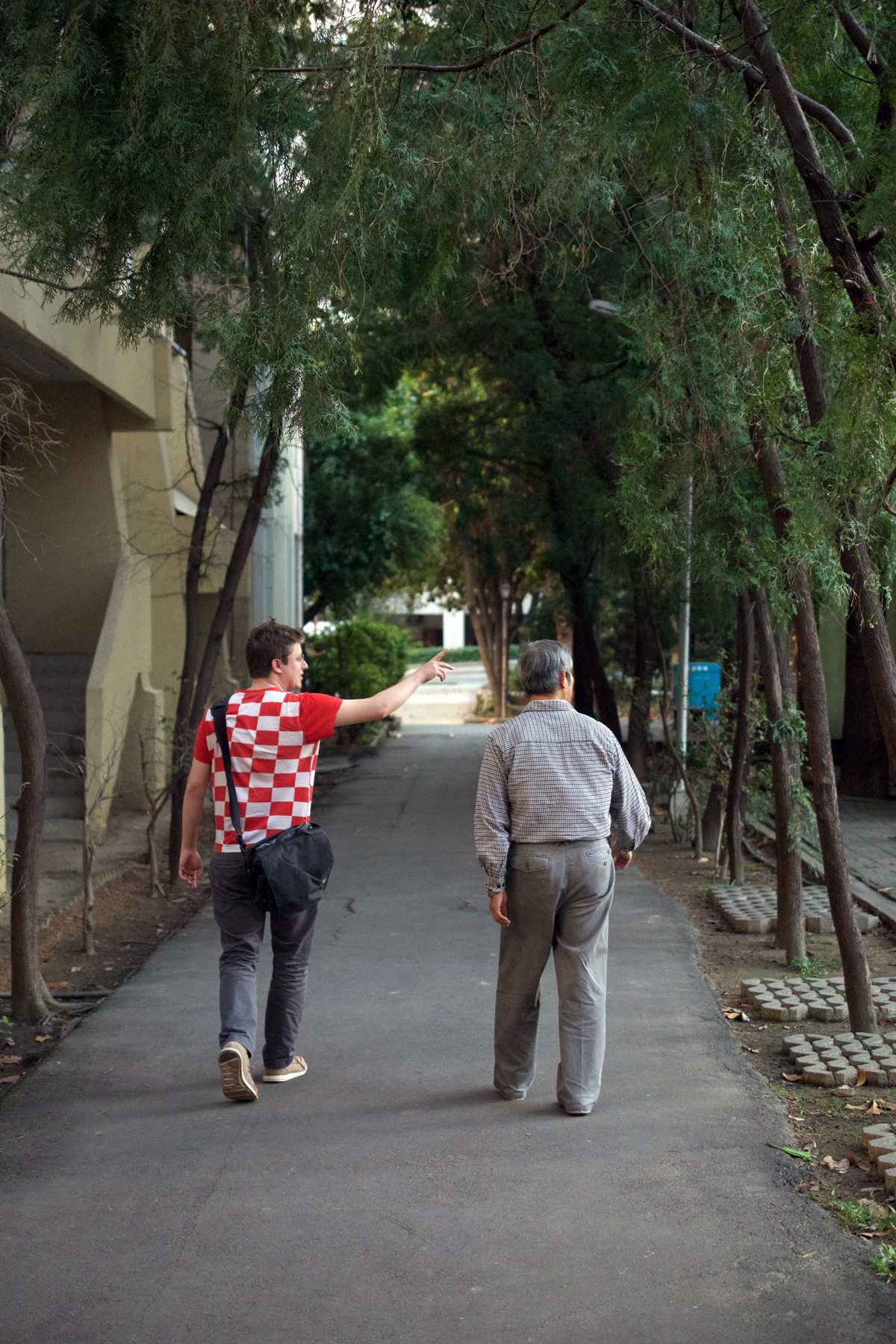
“No. It’s all gone. I don’t recognize any of this. But on that street there, right in front of the school, your mother and I and the other students would go eat dumplings every day.” It was hard to picture the bustling intersection lined with skyscrapers of 2015 replaced with the sparsely populated dirt roads and one-story buildings of 1968, before the US pushed Taiwanese business development as an alternative to China. Then, after a nice dinner and night’s rest at one of the city’s oldest hotels (courtesy of Li Nan Hui), we headed for the HSR once again to continue our 3D printing tour of the island of Taiwan.
During the first half of our trip through Taiwan, I saw a lot of interesting applications of materials science as it relates to polymers, but the second half of my journey was centered all around metals. And, from what I saw, Taiwan is heavily focused on producing the next generation of metal printing technologies with the goal of delivering powerful design solutions that will be used to create the metal metamaterials of the future.
The Industrial Technology Research Institute (ITRI) is the country’s equivalent of Germany’s Fraunhofer Society system or the Netherlands’ TNO. In fact, Tzong-Ming Wu, the Principal Engineer of the Laser and Additive Manufacturing Technology Center, tells me that they work closely with TNO. As a non-profit corporation, ITRI performs research on behalf of corporate clients, often relying on partial government funding, before licensing the technology to their customers. The Laser & Additive Manufacturing Technology Center of the ITRI Southern Region Campus that I visited, as opposed to their other branches and HQ located throughout the island, has been focused on laser technology, specifically femtosecond lasers, for some time. However, after the Taiwanese government began pushing 3D printing three years ago, these lasers started being pointed at metal AM.
Right now, ITRI has already produced two metal AM systems using this laser expertise. These powder bed systems, one with a build volume of 100 x 100 x 100 mm and the other 250 x 250 x 300 mm, are capable of 3D printing a number of metal alloy powders (such as aluminum, titanium, stainless steel, and cobalt-chrome) that the firm produces in house, giving them strict control over the quality of the machines and the material.
What’s more exciting is that ITRI has also developed a monitoring process for what they hope will one day lead to active feedback during the printing process. Currently, manufacturers of just about every metal printing system (potentially excluding the MetalFAB1 from Additive Industries, but we’ll see) are only building towards a closed-loop for quality control, implementing sensors and software to tightly regulate the print process, but still relying heavily on trial and error. So, while ensuring that the printed part matches the specifications of the designed model is possible, it often involves adjusting the printing parameters over and over until repeatability is achieved.
ITRI is also working on its Optical Engine for Material Grain Microstructure-Controlling AM Technology and developing hardware and software for controlling the microstructure of printed parts, so as to manipulate the physical properties at different points throughout a component. Dr. Ji-Bin Horng, Senior Principal Engineer of the Laser and Additive Manufacturing Technology Center, explains, “We are studying the use of laser for micromaterial processing for possible applications in various industries. For instance, we can imprint in such a way as to generate heterogeneous microstructures. Take an aluminum part, for example. We can change the material properties, so that, near the center, we can enhance the hardness of the part. And, along the perimeter, we can enhance its ductility against high temperature fatigue. For this technology, this year, we were among the 19 finalists of the 2015 R&D 100 award for process/prototyping.”
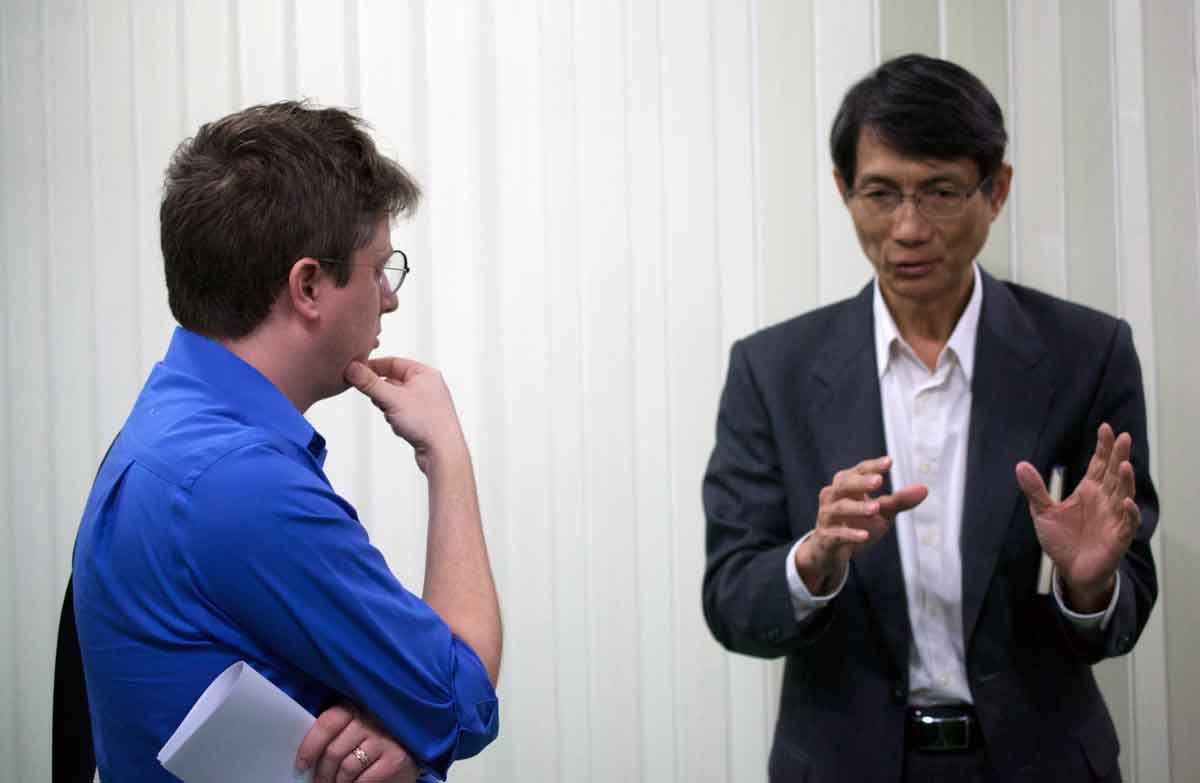
In a separate machine, the team was able to implement the femtosecond laser technology for a variety of surface finishing techniques that were truly impressive. Dr. Horng holds up a business card holder with colored details on its face. “We used a femtosecond and nanosecond laser on this substrate to generate many different colors,” he says. “Then, we use a 3D printer to generate these 3D characters. We use the microstructure to cause different patterns of diffraction, controlling how it diffracts the light, to create different colors. We can use our lasers to create different surface finishing to generate many different colors.”
When I asked if this same laser technology could be used to remove prints from their substrates, as well as clean prints as a part of post-processing, he responded with a confident “Yes,” adding, “We can even use our laser technology to polish parts.” He was quick to point out that this was an entirely separate machine from the 3D printers they’d made, but Tzong-Ming Wu believed that it was feasible to combine the two technologies, some day, so that the printer could create a layer, then polish that layer, and so on, to create an even more accurate form of hybrid manufacturing. “Two years ago,” Dr. Horng adds, “we witnessed the operation of a hybrid machine from the Japanse company Matsuura. They have combined powder bed fusion with a CNC. Using lasers for hybrid manufacturing could be in our next generation machine.”
This is still in the works, but they have made significant progress in determining which internal geometries correlate with which physical properties so that they can, for instance, manufacture a titanium piece that is rigid at one point and flexible at another. Part of this is made possible with unique software, which would ideally supply libraries of geometries for corresponding structural characteristics.
Dr. Fanghei Tsau, the General Director of the Laser and Additive Manufacturing Technology Center, describes their work in this field, “An engineer would ideally want algorithms to generate the optimal microstructures for 3D printing, but you have to build up some elemental structures, some building blocks. You need to have a few options as building blocks so that you can build up a model quickly, accurately, and functionally correct.”

Between the zero of microstructural primitives and the one of macrostructure objects, there are, then, infinite possibilities. So, you can imagine two objects that look identical on the outside, but are made up of different inner geometries that would translate into different mechanical properties and functionlities. “In the future, these elemental microlevel structures may all be standardized,” Dr. Tsau adds. “But in the beginning, we may have two or three sets of these elemental structures that various groups of engineers practice with. And, as the industry matures, maybe they will be unified to be a standard set of elements.”
Dr. Tsau and his team’s efforts to develop a library of microstructural primitives from which to build larger objects requires teaming with other branches of ITRI and outside companies, as well. “At the moment, we are trying to construct the elements and validate their mechanical properties, and build up libraries to support our work,” he says. “We have the ability to build up a machine. But then you need software engineers to optimize all of these libraries together. So, we’re working with a team at ITRI to do this because we are on the hardware side. We’re also collaborating with some companies outside.”
Perhaps more important than the software and defining these microstructural elements is the patent pending laser technology, crucial to their metal 3D printers. What differentiates ITRI’s lasers from the rest is the shape, and therefore control, of the laser spot. Dr. Horng describes the spots of other systems as more of a constant bell shape, “Ours is more like a comet. There’s the spot, and then the tail. The spot melts powder at the maximum heat, but the tail keeps the neighboring area warm so that we can precisely control the melting temperature.” By widening or narrowing the tail of this laser comet and other shapes, the system can manage the melting temperature and, thus, determine the properties of the printed part, varying the temperature of both the focus area and neighboring points throughout the printing process.
To commercialize the metal AM technology, ITRI is working with an industrial partner so that their printers make it to market in the near future. “They have finished the first-generation machine, but have not yet finished the testing,” Dr. Horng says. “After they completes the testing, they will begin marketing the machines, maybe next year.”
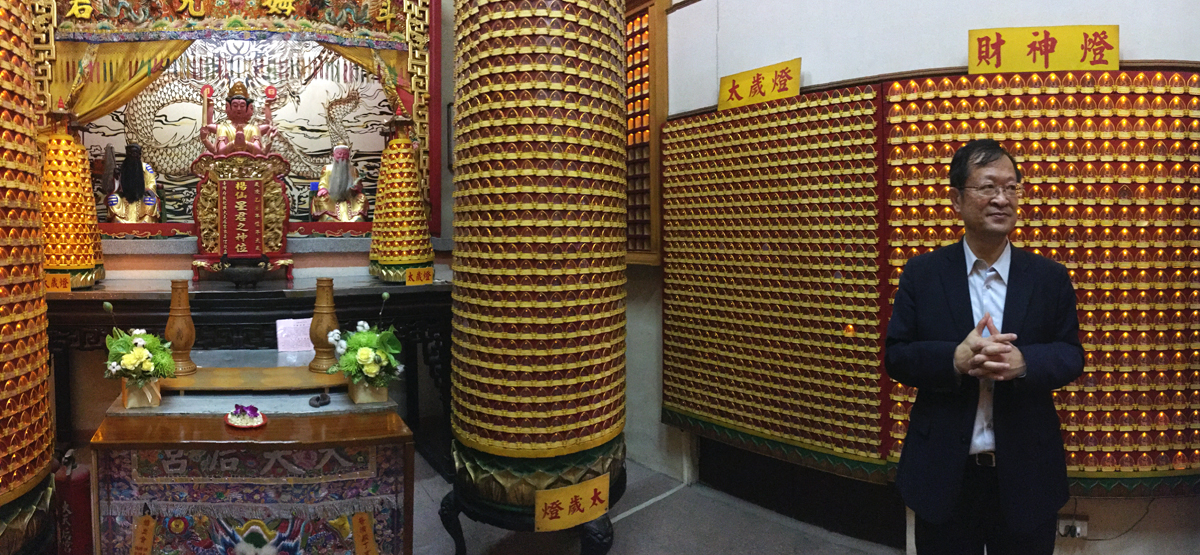
Though not on the same project, ITRI also works with National Cheng Kung University, in Tainan, on a regular basis, which has its own strong metal printing program. Our gracious host, Associate Head of the Department of Mechanical Engineering Prof. Sheng-Jye Hwang, is working with his students on a variety of projects related to direct energy deposition and laser sintering. Both projects involve improving the quality control of those technologies, with Prof. Hwang and his lab combining sensors and software to improve quality control. Prof Yu-Lung Lo, the Chair of the Department of Mechanical Engineering, has also contributed technology related to optical management that could improve it as well. The school has just applied for a large government grant to further research these possibilities.

Outside of these technologies, Prof. Hwang is also an excellent tour guide. In the three hours before our train back to the airport, he took us to see two of the oldest temples in Taiwan, a former Dutch fort, and to dine at one of the best restaurants we’d been to all trip. In that time, we learned about the vast number of buildings that the Japanese had constructed while occupying the island as a military outpost, Taiwan’s relationship to China, and Taiwan’s international status.

So, while we visited conjoined Taoist-Buddhist temples, Prof. Hwang would say, “Here, anyone can practice any religion they want.” He would later go on to say, “There is only one group in the world that recognizes us as a country, and that is ISIS, because of our support of the United States.”

We were also treated to NCKU’s Magic School of Green Technology, housed in an impressively sustainable building that was deemed by green building expert Jerry Yudelson as “the greenest building on the planet.” Atop the roof is a massive solar panel, a wind power array, and rows of gardens, lined in such a way as to pass water from the top row of plants to the bottom. To minimize the use of air conditioning in the summer, walls throughout the building are slatted, letting air circulate around the building with a passive dehumidification design. Outside of the building are porous roads that retain rain water in an underground reservoir, as well as a small tropical rain forest meant to represent a small contribution towards rebuilding the destruction of these essential ecological systems that continues to occur worldwide.
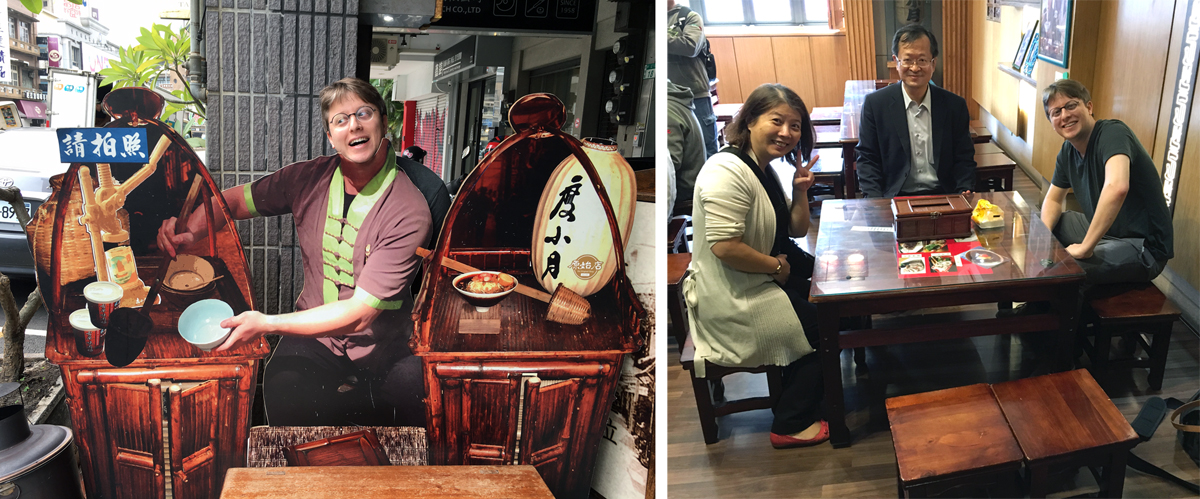
Tainan is considered the culinary center of Taiwan and Du Xiao Yue is legendary for their Dan Zai noodles, flavored with minced meat, dried shrimp and black vinegar. With only fifteen minutes left before we had to rush to the train station, we scarfed down the meal enamored with the traditional Taiwanese taste, and headed to the HSR. This would be our last stop in Taiwan, before boarding the plane and enduring a 40-hour trip (originally meant to be 23 hours) back to mainland USA. I’d finally recovered from a week-long cold, but would probably never recover from the wonderful sights, sounds, tastes, and people I’d known during my brief time in Taiwan.



